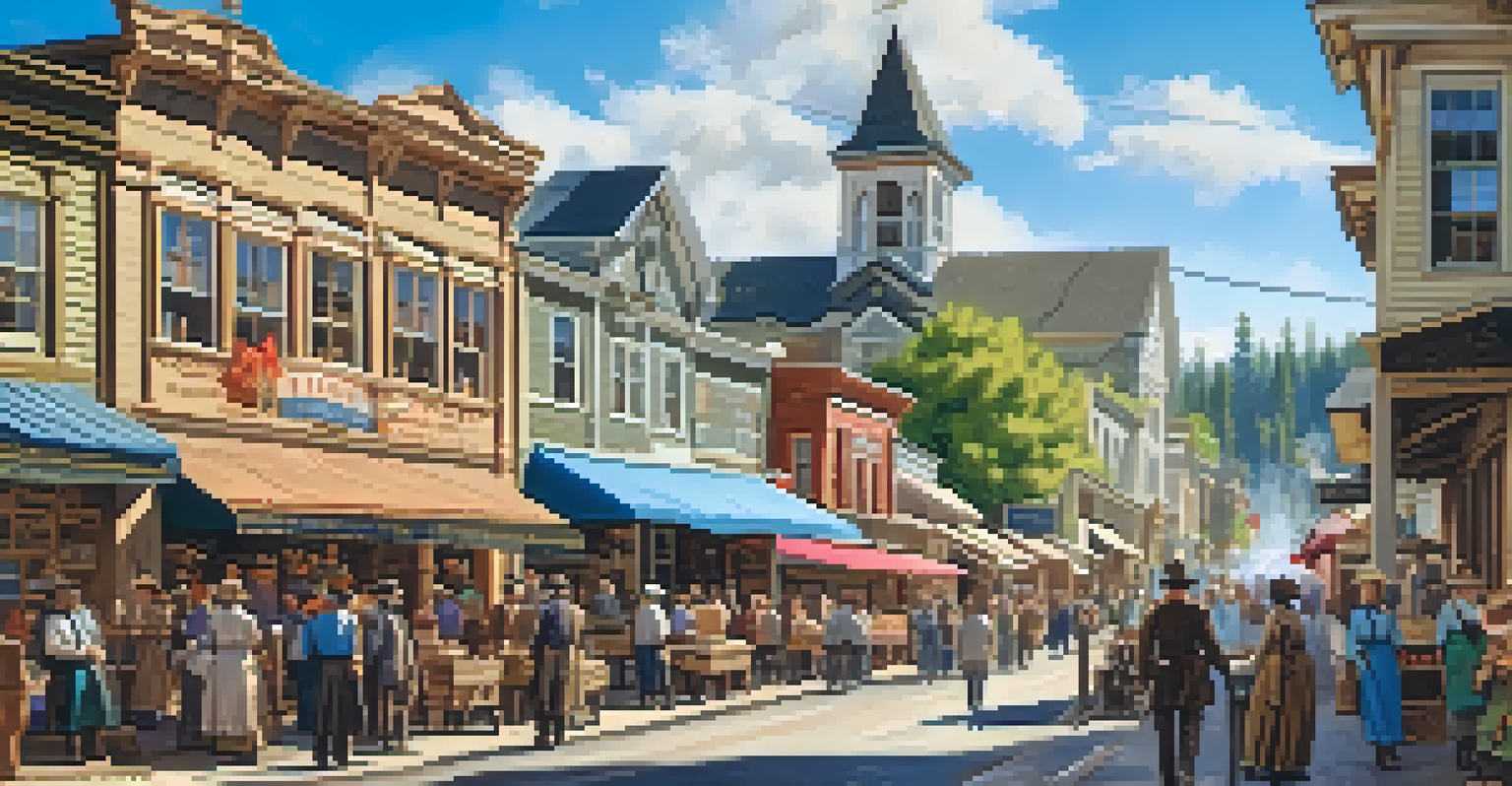California's Historic Preservation: A Journey Through Time

Understanding Historic Preservation in California
Historic preservation in California involves protecting the state's rich architectural and cultural heritage. This practice helps maintain buildings, sites, and landscapes that hold historical significance. By preserving these elements, we not only honor our past but also enrich our future, creating a sense of identity and continuity.
Preservation is the key to our past, and the foundation for our future.
California's diverse history, from Native American cultures to Spanish missions, reflects a tapestry of influences that shaped the state. Each preserved site tells a story, offering insights into the lives and experiences of those who came before us. This is why historic preservation is crucial for fostering public understanding and appreciation of our shared heritage.
Moreover, these efforts often contribute to local economies, attracting tourism and boosting community pride. When people visit preserved sites, they engage with history in a tangible way, which can inspire deeper connections to the places they live and visit.
The Role of Legislation in Preservation
Legislation plays a pivotal role in the preservation of historic sites across California. The California Environmental Quality Act (CEQA) is one of the key laws that ensures projects consider their potential impacts on historic resources. This law requires state and local agencies to evaluate and mitigate impacts, promoting thoughtful development.

In addition to CEQA, the National Historic Preservation Act (NHPA) provides a framework for preserving historic properties at the federal level. Both laws encourage collaboration between government agencies, nonprofit organizations, and local communities, fostering a united effort to safeguard our history.
Preservation Enriches Community Identity
Historic preservation fosters a sense of identity and continuity by maintaining sites that reflect California's diverse heritage.
Through these legislative measures, California not only protects its past but also sets a precedent for other states. By establishing clear guidelines and fostering community involvement, the state demonstrates that preservation is a shared responsibility.
Key Historic Sites and Their Stories
California is home to countless historic sites, each with unique stories that reflect the state's diverse heritage. For instance, the Mission San Juan Capistrano, founded in 1776, is famous for its beautiful architecture and rich history tied to the early Spanish settlers. It serves as a reminder of the cultural exchanges that shaped early California.
Heritage is our legacy from the past, what we live with today, and what we pass on to future generations.
Another notable site is the Gold Rush-era town of Nevada City, which transports visitors back to the 1850s. Its well-preserved buildings and vibrant community events celebrate the gold mining history that attracted thousands to the state. Each corner of this town echoes the spirit of resilience and ambition of those who sought fortune.
These sites are not just relics; they are living parts of our community fabric. They host events, educational programs, and tours that help keep history alive for future generations, demonstrating the importance of preservation in maintaining our cultural identity.
Community Involvement in Preservation Efforts
Community involvement is essential in the realm of historic preservation. Local residents often serve as passionate advocates for preserving their neighborhoods, sharing the stories that make their areas unique. This grassroots effort fosters a sense of ownership, encouraging individuals to take pride in their local history.
For example, neighborhood associations frequently organize events, such as walking tours or restoration workshops, to raise awareness about the importance of maintaining historic sites. These activities not only educate participants but also create stronger bonds among community members who share a common goal.
Legislation Supports Historic Sites
Key laws like CEQA and NHPA ensure that historic resources are considered in development, promoting collaboration for preservation.
When communities come together to protect their heritage, they create a dynamic dialogue about the future of their environment. This collaboration can lead to innovative solutions that balance development with preservation, ensuring that history remains a part of the community narrative.
Challenges Facing Historic Preservation
Despite the importance of historic preservation, many challenges persist in California. One significant issue is the pressure from urban development, which often prioritizes new construction over the preservation of older buildings. This can lead to the demolition of sites that hold historical value, erasing parts of our collective memory.
Another challenge is funding. Restoring and maintaining historic sites can be costly, and not all communities have the financial resources to support these efforts. Grants and state funding can help, but they are often limited and competitive, leaving many projects on hold.
Additionally, public awareness and engagement are crucial. Without widespread understanding of the importance of preservation, it can be easy for significant sites to be overlooked. Education and advocacy are vital in overcoming these challenges, ensuring that history is valued and preserved for future generations.
Innovative Preservation Techniques
As technology advances, so do the techniques for preserving historic sites. Innovative methods such as 3D scanning and digital modeling allow preservationists to document and restore structures with incredible precision. These tools not only enhance the accuracy of restoration efforts but also make it easier to share historical information with the public.
Moreover, sustainable practices are increasingly being integrated into preservation projects. By using eco-friendly materials and energy-efficient systems, historic buildings can be updated to meet modern standards while still honoring their original design. This approach ensures that preservation does not come at the expense of environmental responsibility.
Community Engagement Drives Preservation
Local residents play a crucial role in advocating for historic sites, fostering pride and ownership in their unique heritage.
The combination of technology and sustainability in preservation efforts demonstrates a forward-thinking approach to maintaining our history. It allows us to adapt to the needs of the present while respecting the past, ultimately enriching our cultural landscape.
The Future of Historic Preservation in California
Looking ahead, the future of historic preservation in California appears promising yet challenging. As more communities recognize the value of their historical assets, there is a growing commitment to protect and celebrate these treasures. This shift in mindset bodes well for the preservation movement as a whole.
However, ongoing challenges, such as climate change and urbanization, will require adaptive strategies. Preservationists must continue to find innovative solutions that address these external pressures while maintaining the integrity of historic sites. Collaborative efforts among various stakeholders will be essential in navigating these complexities.

Ultimately, the future of historic preservation hinges on our collective commitment to honoring our past while shaping a sustainable and inclusive future. By fostering a culture of appreciation for history, we can ensure that California's rich heritage remains a vital part of its identity for generations to come.